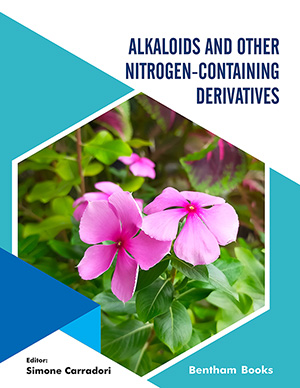Abstract
The classical definition of alkaloids describes this class of secondary
metabolites as chemical structures containing nitrogen as part of a heterocyclic, with
alkaline character, characterized by complex structure and limited distribution, mainly
in the plant kingdom. The modern history of alkaloids starts in the early nineteenth
century as figured by two milestone dates, 1803 when Derosne described the isolation
of a mixture containing narcotin and morphine from opium, and 1819 when the chemist
Meissner delivered an operative definition of the term alkaloid. They have been
observed with sporadic distribution in bacteria, fungi, Pteridophytae and Gymnophytae,
while they are mainly represented in higher plants and within Angiosperms,
particularly in selected families, such as Annonaceae, Lauraceae, Loganaceae,
Menispermaceae, Papaveraceae, Ranuncolaceae, Rubiaceae, Rutaceae, Solanaceae and
others. Frequently, a plant activates selectively a metabolic pathway that produces a
mixture of multiple but structure-related alkaloids. Sometimes, dozens may be with a
restricted number representing the majority of the total content. The latter parameter
could change significantly as a result of a plethora of many factors, including the plant
organ, seasonal variations, phenological status and others. As general rules, the
alkaloids are segregated in the form of salt inside cell vacuole or sometimes in laticifer,
mainly through the superficial tissues, supporting the hypothesis of their biological
involvement in plant-environment interactions.
Keywords: Alkaloids, Network pharmacology, Phytochemistry, Plant secondary metabolites.






















